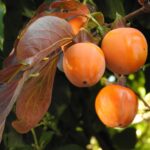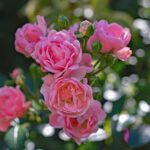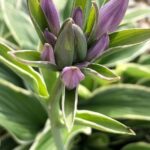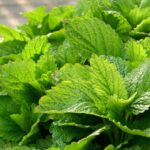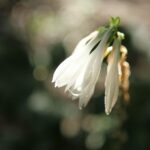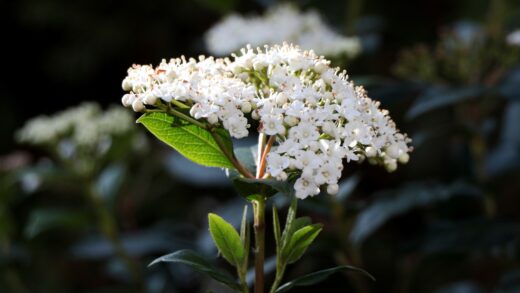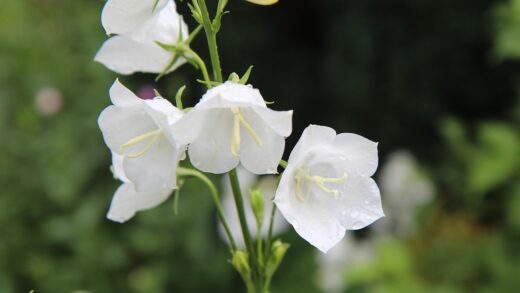The Abyssinian gladiolus, scientifically known as Gladiolus callianthus ‘Murielae’ (often also referred to as Acidanthera murielae), is an exceptionally elegant and fragrant cormous plant native to the higher regions of Southern and Eastern Africa. On its slender stems, it bears star-shaped, white flowers with a deep maroon blotch in the throat, lending a special charm to late summer and early autumn gardens. Although considered a relatively resilient plant, it is unfortunately not entirely immune to various diseases and pests that can occasionally cause serious headaches for attentive garden enthusiasts. Timely recognition of these problems and the application of appropriate protection strategies are crucial for us to enjoy the splendor of these wonderful flowers year after year.
During the cultivation of the Abyssinian gladiolus, it is important to be aware of the potential dangers that can threaten the plant’s health. Prevention is always the best defense, so ensuring suitable growing conditions, such as well-drained soil, a sunny location, and expert fertilization, can in itself significantly help to avoid problems. The quality of the corms is also decisive; healthy, undamaged planting material from reliable sources should always be chosen. Ensuring adequate spacing between plants promotes air circulation, thereby reducing the risk of fungal infections.
In the event of the appearance of diseases and pests, a swift and effective reaction is essential. Through regular inspection of the plants, it is necessary to monitor any changes on the leaves, stems, and flowers, such as spots, deformations, or traces of pest presence. If suspicious signs are observed, it is important to identify the causative agent of the disease or the pest in order to apply targeted protection. In this article, we will present in detail the most common problems that affect the Abyssinian gladiolus and the possibilities for effective control.
When implementing plant protection measures, an effort should be made to prioritize environmentally friendly solutions whenever possible. Numerous biological plant protection methods and homemade preparations exist that can be effectively applied to reduce pest numbers or prevent the spread of diseases. Chemical protection should only be applied in justified cases, after assessing the severity of the problem and the environmental impact, always adhering to the instructions for use of the preparations and pre-harvest intervals, although the latter is less relevant for ornamental plants.
Fungal Diseases: The Invisible Enemy
Abyssinian gladioli, similar to other gladiolus species, can be threatened by numerous fungal diseases which, under favorable environmental conditions – such as persistently humid, warm weather or excessive watering – can spread rapidly. These pathogens often overwinter in the soil or on infected plant debris and can re-infect plants the following season. The symptoms of fungal infections can be varied, ranging from spots on the leaves, to stem rot, and even the destruction of the corms. For preventive purposes, it is extremely important to plant high-quality, disease-resistant corms and to practice crop rotation.
More articles on this topic
Among the most common fungal problems is Fusarium wilt, caused by the fungus Fusarium oxysporum f. sp. gladioli. This pathogen enters the plant through the roots and, by clogging the conductive tissues, causes wilting and yellowing, which often initially appears on only one side of the plant. In severe infections, the plant dies, and the corms exhibit a brown, dry rot. The basis of protection is the immediate removal and destruction of infected plants and the disinfection or replacement of the soil, although the latter is difficult to implement in larger gardens.
Another significant fungal disease is gray mold, or Botrytis blight, caused by the polyphagous fungus Botrytis cinerea. This pathogen primarily attacks damaged plant parts and faded flowers, especially in humid and cool weather. Watery spots appear on the infected parts, which are later covered by a gray, velvety mold coating. The flowers rot, and brown spots may appear on the leaves. For preventive purposes, it is important to ensure good ventilation, regularly remove faded flowers and diseased leaves, and avoid excessive nitrogen fertilization.
Stromatinia dry rot (Stromatinia gladioli) can also cause serious damage, primarily attacking the corms and the underground parts of the plant. Small, black sclerotia (the overwintering forms of the fungus) appear on the infected corms, and the corm flesh rots dryly. The above-ground parts of the plant show weaker development, turn yellow, and then die. Protection here is also based on the destruction of infected corms and strict adherence to crop rotation, as the sclerotia can remain viable in the soil for several years.
Leaf Spots and Other Fungal Problems
Various types of fungal leaf spots can appear on the leaves of the Abyssinian gladiolus which, although rarely leading to the complete death of the plant, cause aesthetic damage and can weaken the plant, thereby reducing flower yield and corm quality. An example is leaf spot disease caused by species of the genus Curvularia, which manifests as dark brown, oval, or irregular spots, often surrounded by a yellow halo. These spots can later merge, forming larger dead areas on the leaf blade. To prevent infection, it is important to remove plant debris and ensure an airy plant stand.
More articles on this topic
Rust diseases, although less common on Abyssinian gladiolus than on other ornamental plants, may occasionally occur. These are caused by various rust fungi, and a characteristic symptom is orange-yellow, brown, or black, powdery pustules, the so-called uredospores or teleutospores, which appear on the underside of the leaves. Yellowish spots are visible on the upper side of the leaves. Rust infection reduces the plant’s assimilation surface, which leads to weaker growth and flowering. The basis of protection is the early removal of infected leaves and, if necessary, the use of an appropriate fungicide.
Sclerotinia disease, caused by the fungus Sclerotinia gladioli (not to be confused with Stromatinia rot), primarily attacks the lower part of the stem and the corm, causing rot. Black, irregular sclerotia form in the infected tissues, remaining viable in the soil for a long time. This disease can manifest especially in humid and cool conditions. For preventive purposes, well-drained soil, crop rotation, and the destruction of infected plant parts are important. Treating the corms before planting can also help reduce the risk of infection.
Generally, it can be stated that the most important element of protection against fungal diseases is prevention. This includes the use of healthy planting material, the choice of a suitable growing site, optimal plant nutrition and irrigation, and adherence to hygiene rules. If, despite everything, an infection occurs, early recognition and targeted intervention – whether it be the removal of diseased parts or the use of authorized plant protection products – are crucial to prevent further spread and save the plant.
Viral Diseases: The Hidden Danger
Viral diseases can also pose a problem for the Abyssinian gladiolus, although their diagnosis is often more difficult than that of fungal infections, as the symptoms are variable and can sometimes be confused with other problems (e.g., nutrient deficiency). Viruses spread through the plant sap and generally cause a systemic infection, meaning the entire plant becomes affected. Unfortunately, there is currently no direct cure for viral diseases; protection is based exclusively on prevention and control against the vectors of viruses (e.g., aphids).
One of the known viruses that can infect gladioli, and therefore potentially also the Abyssinian gladiolus, is the Bean Yellow Mosaic Virus (BYMV). This virus can cause light green or yellowish mosaic spots and streaks on the leaves, and color alterations and deformations on the flowers. Infected plants often grow more weakly and remain stunted. The virus is primarily spread by aphids, but can also be transmitted mechanically, for example, with infected pruning shears.
Tobacco Mosaic Virus (TMV) and Cucumber Mosaic Virus (CMV) are also polyphagous viruses with a wide host range that can also infect species of the gladiolus family. Their symptoms can be similar to those caused by BYMV: leaf mosaic, deformations, growth disorders. CMV is particularly known for its ability to cause “color breaking” in flowers, i.e., an alteration of the normal pigmentation of the petals, or streaking, which, although sometimes creating an interesting pattern, is actually a symptom of disease.
To prevent viral infections, the most important thing is to obtain healthy, virus-free planting material. Propagation from plants that appear diseased should be avoided. In the garden, regular removal of weeds is important, as many weeds can be virus reservoirs. Controlling insects that transmit viruses, such as aphids and thrips, is also crucial. If a plant is clearly identified as being infected with a virus, it must be immediately removed from the garden and destroyed to prevent further spread; it should not be composted.
Pest Attack: The Visible Enemies
Abyssinian gladioli are not only threatened by diseases but also by various pests which, through their sucking or chewing, cause direct damage and can also transmit diseases. The appearance of these pests is often seasonal, and their intensity depends on weather conditions and the general ecological state of the garden. Regular inspection is also essential here for early detection and effective protection. Following the principles of integrated pest management, an effort should be made to prioritize biological control methods.
One of the most significant and feared pests is the gladiolus thrips (Thrips simplex). These tiny insects, barely 1-2 mm long, dark brown or black in color, feed by sucking sap from leaves, flower stems, and petals. As a result of their sucking, silvery or whitish spots and streaks appear on the leaves, and the flowers become deformed, spotted, do not open properly, or dry up while still in bud. Thrips hide in the hidden parts of the plant, such as leaf sheaths or flower buds, which makes their control difficult.
Aphids (Aphididae) can also be frequent guests on the Abyssinian gladiolus, especially on young shoots and flower buds. These small, soft-bodied insects form colonies and suck plant sap, which can cause leaf deformation, yellowing, and a general weakening of the plant. In addition, they excrete honeydew, on which sooty mold can develop, further reducing the plant’s aesthetic value. Aphids are also known for their ability to transmit various viral diseases, thereby causing indirect damage as well.
Occasionally, spider mites (Tetranychidae) may also appear, mainly during warm and dry weather. These tiny, spider-like organisms live on the underside of the leaves and form a fine web. As a result of their sucking, small, yellowish, or whitish dots appear on the leaves, and the leaves later take on a bronze hue, dry up, and fall off. In case of severe infestation, the plant can be significantly weakened. In prevention, it is important to ensure adequate air humidity for the plants, for example, by occasionally spraying the leaves.
Control of Specific Pests
Controlling gladiolus thrips is a complex task, as the pest is difficult to eradicate completely due to its hidden lifestyle and rapid reproduction. An important preventive step can be the treatment of corms before planting, for example, by soaking them in warm water (about 50-55°C for 10-20 minutes) or by treating them with an appropriate insecticide. During the growing season, at the first appearance of symptoms, control must be started immediately. When spraying, it is important that the product reaches the leaf sheaths and buds. Various contact and systemic insecticides can be effective, but it is advisable to alternate active ingredients to prevent the development of resistance.
Aphid control is generally simpler. In case of minor infestation, it may be sufficient to wash the aphids off the plant with a jet of water or to spray with soapy water (e.g., a potassium soap solution). Their natural enemies, such as ladybugs and their larvae, as well as hoverfly larvae, also effectively reduce their population, so it is worthwhile to create a garden that attracts these beneficial organisms. In case of more severe infestation, insecticides, for example, pyrethroids or neem oil-based preparations, can be used, taking into account their impact on beneficial insects.
In controlling spider mites, the emphasis should be on prevention, especially during dry and warm periods. Maintaining the humidity of the plant’s environment, for example, through fine spraying in the morning hours, can help keep them away. If an infestation has already occurred, the application of specific acaricides may be necessary. Biological control methods, such as the introduction of predatory mites, also exist, but these are more common in greenhouse conditions. It is important to remove and destroy infected leaves.
Other occasional pests, such as various caterpillars (e.g., noctuid moth larvae) or snails and slugs, can also cause damage to the Abyssinian gladiolus by chewing leaves and flowers. Against caterpillars, manual collection or spraying with preparations containing Bacillus thuringiensis (Bt) can be effective. Against snails, various molluscicides, baits, or physical barriers (e.g., copper tape) can offer a solution. Regular garden inspection helps to detect these pests in time and take the necessary measures.
Integrated Pest Management and Preventive Strategies
The key to the successful and healthy cultivation of the Abyssinian gladiolus lies in the application of integrated pest management (IPM) strategies, which are based on prevention, regular monitoring, and prioritizing environmentally friendly interventions. This approach not only protects plant health but also contributes to conserving the garden’s biodiversity and reducing the environmental load. The fundamental principle of IPM is that chemical control should only be applied as a last resort, in a targeted manner, and to the minimum extent necessary.
The first and most important step in prevention is the choice of a suitable growing site and soil preparation. The Abyssinian gladiolus requires a sunny, warm location and well-drained, nutrient-rich soil. Areas with stagnant water should be avoided, as these favor the proliferation of fungi that cause root and corm rot. When planting corms, adhere to the recommended planting depth and spacing between plants, which ensures adequate air flow between plants, reducing the risk of leaf diseases.
The application of crop rotation is also of fundamental importance, especially in the case of pathogens and pests that overwinter in the soil. Do not plant gladioli in the same spot for several consecutive years; ideally, the site should be rotated with other, unrelated plants in 3-4 year cycles. This helps to break the life cycle of diseases and pests and to reduce the infection pressure accumulated in the soil. The careful removal and destruction of plant debris, especially diseased or infected parts (do not compost!), are also essential to prevent the overwintering of pathogens.
Supporting biodiversity in the garden contributes to natural pest control. Plant species that attract beneficial insects, such as ladybugs, hoverflies, and lacewings, which feed on aphids and other pests. Avoid the use of broad-spectrum insecticides that can also destroy these beneficial organisms. Healthy, stress-free plants are more resistant to diseases and pests, so balanced nutrition and watering as needed, but not excessively, are also an important part of preventive strategies.




